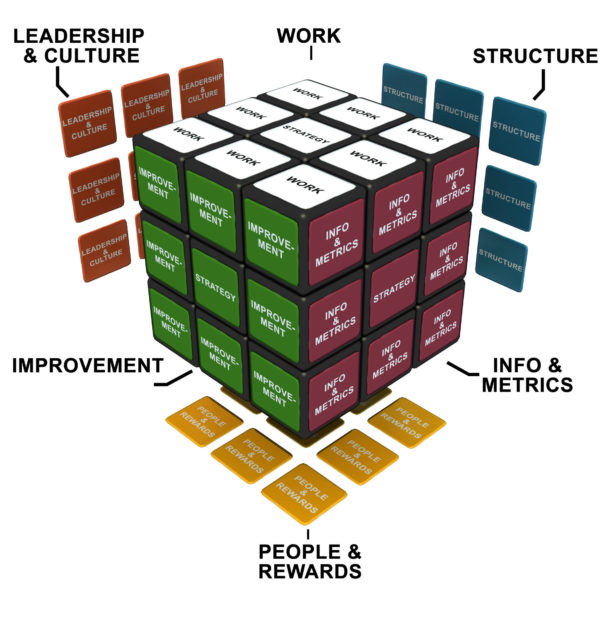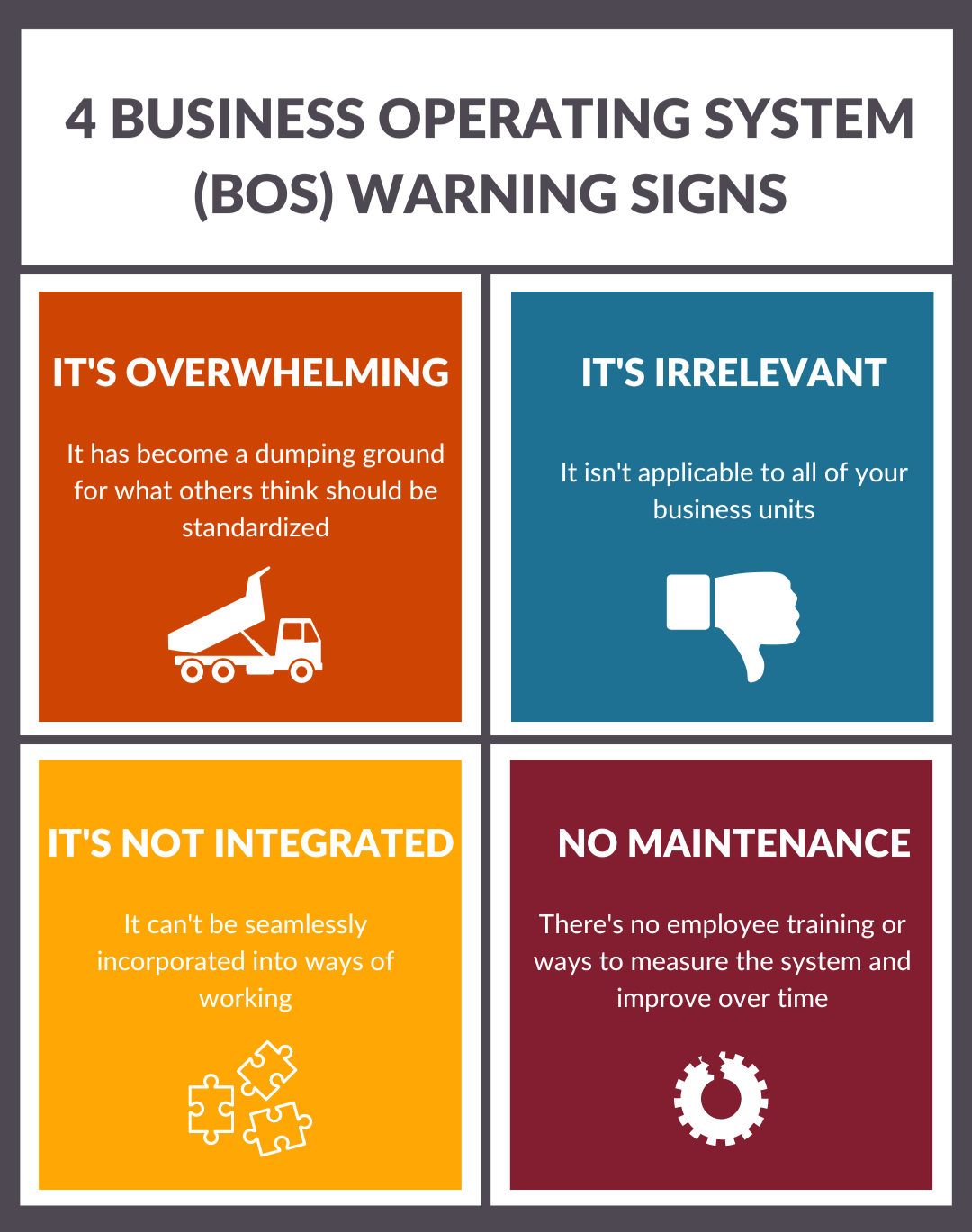No one wants to run an organization by brute force. With unpredictability in the marketplace and the increasing need for rapid decision making, simplifying processes within an organization can bring some order to the chaos.
A business operating system (also known as an operating rhythm) is one way to achieve predictability. It gives you early visibility into business risks and connects the organization with a common language. Most organizations tend to cobble together a patchwork of business system parts based on reactions to crises or problems. However, our experience is that building it in a planned and intentional way is more efficient and effective. Wouldn’t it be great to actually design an operating system that aligns with the company strategy and helps the business address critical performance levers for long-term success?
What is a Business Operating System (BOS)?
As AlignOrg Solutions Principal Reed Deshler wrote in a recent Forbes article, “At a basic level, a BOS is a set of processes, methods, and mechanisms that enable the organization to operate in a predictable and intentional way to meet its objectives and achieve its strategy.” I like to think of this as the backbone of any organization; a set of core ways of working.
What Are the Components of a Business Operating System?
At AlignOrg Solutions, we use the metaphor of a Rubik’s Cube when talking about an organization. We believe the organization works best when all of its “sides” are aligned to strategy. The same metaphor can be used for designing an operating system.

Vision and Strategy: How the strategy is developed, updated, and cascaded to ensure 100 percent of the organization is on the same page.
Work: A core set of critical processes to drive consistency and systemize the business.
Structure/ Governance: The operating rhythm of the company. This includes governance mechanisms such how priorities are set and revisited, how resources will be allocated and who has the decision rights.
Information/ Metrics: The common organizational scorecard of critical measurements to assess the pulse of the business and identify risks early.
People: Roles required to maintain and improve the operating system.
Continuous Improvement: An ongoing method for improving the operating system and solving problems.
Leadership & Culture: Core leadership behaviors critical to the organization’s success.
Our experience with various organizations has identified two typical ways that a BOS is built. The first evolves with a Lean Six Sigma approach in functions such as manufacturing. It then extends to other parts of the organization and further expands to add methods or mechanisms for vision and strategy, transformation and growth. Alternatively, you could build your BOS using a strategy-back approach where elements are discussed, prioritized and executed. The remainder of the article refers to this approach.
How Do You Design a BOS From Scratch?
There are four steps leaders can take to design a business operating system that will set the organization up for success and long-term sustainability.
1. Define the purpose
Is the goal to focus on driving efficiency through the organization and to deliver on growth expectations. Or, is it purely to connect the organization through a common language and operating rhythm? These are all valid reasons. The question you must ask is, “What is most important now for our operating system? What can we add over time?”
2. Identify BOS components
How does your organization intend to win in the marketplace? What components of a BOS will have the biggest impact?
3. Categorize the status of each component
We have found there is really no such thing as “from scratch.” Every company has some mechanisms that can and should be incorporated into a BOS. As such, categorizing the current state is helpful from initial design to full implementation.
4. Check your work
Whether the components you identified are already in place or just designed, check your work. Reflect on each component to determine if it is efficient, repeatable, scalable, and relevant. As you look across your work, check if the design is dynamic. Is it able to adjust to changes in market realities quickly? Is it integrated across the organization?
What Are the Watch Outs for Building an Operating System?
A BOS shouldn’t be a one-size-fits-all solution or a one-time project. You must customize it to the needs and nuances of your organization and continually maintain it. The following red flags are signs that your BOS may not lead to improved business performance.

1. The BOS is overwhelming
This cannot be dumping ground for everyone’s opinion on what could be standardized. You must be disciplined when determining what to include. If there are too many components, it may never get adopted.
2. The BOS is not relevant
This can be especially challenging for organizations with multiple business units. For example, one client had both a products business and services business. Approximately 25 percent of the scorecard metrics were different for each to accommodate their unique business drivers.
3. The BOS is not integrated
Getting back to the patchwork concept mentioned at the start, this is where there are many overlapping or in-conflict aspects of the business operations system. The key is that each business unit, region and function is able to seamlessly incorporate the BOS into their ways of working. This is always critical, but even more so if moving from a periodic to an Agile system.
4. The BOS care and feeding is ignored
You must maintain your BOS if you want it to be successful. Your organization should be trained to use the BOS, and it should be measured and improved. With one industrial client, they had terrific PowerPoints and templates outlining their BOS but they did not measure adoption and usage. After digging down into the organization, we found that their BOS was being used in a very limited way.
Order is Freedom
As we’ve mentioned, your work doesn’t end after the BOS is designed. You must deploy, reinforce, leverage and measure it, and then ensure it is continually improved.

Winston Churchill once said, “For the first 25 years of my life, I wanted freedom. For the next 25 years I wanted order. For the next 25 years, I realized that order is freedom.” That is what a great BOS should feel like, the freedom to run and quickly adjust to changes to deliver results.





